Archive For The “Hardware” Category
Two of the highest leverage datacenter efficiency improving techniques currently sweeping the industry are: 1) operating at higher ambient temperatures (http://perspectives.mvdirona.com/2011/02/27/ExploringTheLimitsOfDatacenterTemprature.aspx) and air-side economization with evaporative cooling (http://perspectives.mvdirona.com/2010/05/15/ComputerRoomEvaporativeCooling.aspx). The American Society of Heating and Refrigeration, and Air-Conditioning Engineers (ASHRAE) currently recommends that servers not be operated at inlet temperatures beyond 81F. Its super common to…
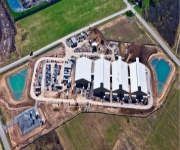
Chris Page, Director of Climate & Energy Strategy at Yahoo! spoke at the 2010 Data Center Efficiency Summit and presented Yahoo! Compute Coop Design. The primary attributes of the Yahoo! design are: 1) 100% free air cooling (no chillers), 2) slab concrete floor, 3) use of wind power to augment air handling units, and 4)…
Datacenter temperature has been ramping up rapidly over the last 5 years. In fact, leading operators have been pushing temperatures up so quickly that the American Society of Heating, Refrigeration, and Air-Conditioning recommendations have become a become trailing indicator of what is being done rather than current guidance. ASHRAE responded in January of 2009 by…
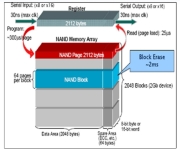
Last week, Sudipta Sengupta of Microsoft Research dropped by the Amazon Lake Union campus to give a talk on the flash memory work that he and the team at Microsoft Research have been doing over the past year. Its super interesting work. You may recall Sudipta as one of the co-authors on the VL2 Paper…
NVIDIA has been an ARM licensee for quite some time now. Back in 2008 they announced Tegra, an embedded client processor including an ARM core and NVIDIA graphics aimed at smartphones and mobile handsets. 10 days ago, they announced Project Denver where they are building high-performance ARM-based CPUs, designed to power systems ranging from “personal…
Years ago I incorrectly believed special purpose hardware was a bad idea. What was a bad idea is high-markup, special purpose devices sold at low volume, through expensive channels. Hardware implementations are often best value measured in work done per dollar and work done per joule. The newest breed of commodity networking parts from Broadcom,…
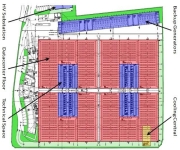
Achieving a PUE of 1.10 is a challenge under any circumstances but the vast majority of facilities that do approach this mark are using air-side economization. Essentially using outside air to cool the facility. Air-side economization brings some complexities such as requiring particulate filters and being less effective in climates that are both hot and…
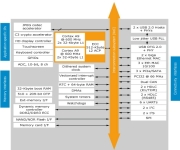
I’m interested in low-cost, low-power servers and have been watching the emerging market for these systems since 2008 when I wrote CEMS: Low-Cost, Low-Power Servers for Internet Scale Services (paper, talk). ZT Systems just announced the R1081e, a new ARM-based server with the following specs: · STMicroelectronics SPEAr 1310 with dual ARM® Cortex™-A9 cores ·…
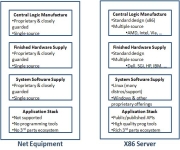
I did a talk earlier this week on the sea change currently taking place in datacenter networks. In Datacenter Networks are in my Way I start with an overview of where the costs are in a high scale datacenter. With that backdrop, we note that networks are fairly low power consumers relative to the total…
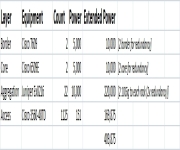
A couple of weeks back Greg Linden sent me an interesting paper called Energy Proportional Datacenter Networks. The principal of energy proportionality was first coined by Luiz Barroso and Urs Hölzle in an excellent paper titled The Case for Energy-Proportional Computing. The core principal behind energy proportionality is that computing equipment should consume power in…
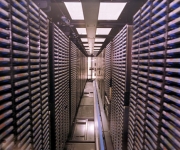
Hierarchical storage management (HSM) also called tiered storage management is back but in a different form. HSM exploits the access pattern skew across data sets by placing cold, seldom accessed data on slow cheap media and frequently accessed data on fast near media. In old days, HSM typically referred to system mixing robotically managed tape…
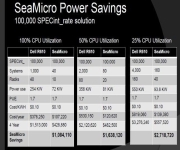
I’ve been talking about the application low-power, low-cost processors to server workloads for years starting with The Case for Low-Cost, Low-Power Servers. Subsequent articles get into more detail: Microslice Servers, Low-Power Amdahl Blades for Data Intensive Computing, and Successfully Challenging the Server Tax Single dimensional measures of servers like “performance” without regard to server cost…
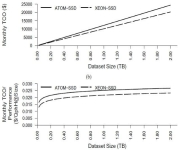
I am excited by very low power, very low cost servers and the impact they will have on our industry. There are many workloads where CPU is in excess and lower power and lower cost servers are the right answer. These are workloads that don’t fully exploit the capabilities of the underlying server. For these…
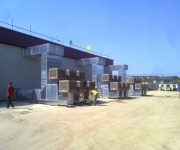
I recently came across a nice data center cooling design by Alan Beresford of EcoCooling Ltd. In this approach, EcoCooling replaces the CRAC units with a combined air mover, damper assembly, and evaporative cooler. I’ve been interested by evaporative coolers and their application to data center cooling for years and they are becoming more common…
Wide area network costs and bandwidth shortage are the most common reasons why many enterprise applications run in a single data center. Single data center failure modes are common. There are many external threats to single data center deployments including utility power loss, tornado strikes, facility fire, network connectivity loss, earthquake, break in, and many…
Rich Miller of Datacenter Knowledge covered this last week and it caught my interest. I’m super interested in modular data centers (Architecture for Modular Datacenters) and highly efficient infrastructure (Data Center Efficiency Best Practices) so the Yahoo! Computing Coop caught my interest. As much as I like the cost, strength, and availability of ISO standard…